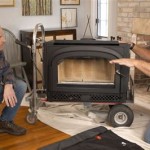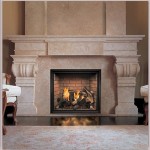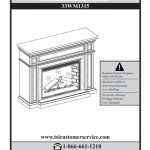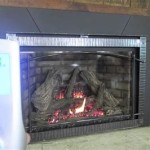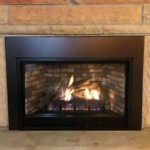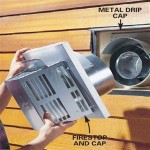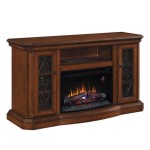Replacing a Gas Fireplace With a Pellet Stove: A Comprehensive Guide
Home heating technologies are constantly evolving, offering homeowners increased efficiency and diverse fuel options. A common transition observed today is replacing a gas fireplace with a pellet stove. This shift often stems from a desire for cost savings, improved heating performance, or a preference for a more sustainable fuel source. This article will explore the key considerations and steps involved in replacing a gas fireplace with a pellet stove, providing a comprehensive overview for homeowners contemplating such a conversion.
Gas fireplaces, while convenient and aesthetically pleasing, can be expensive to operate, especially with fluctuating natural gas prices. Their heating efficiency can also be limited, with much of the heat escaping through the chimney. Pellet stoves, on the other hand, burn wood pellets, a renewable biomass fuel made from compacted sawdust and other wood waste. They offer higher heating efficiency, often exceeding 80%, and can provide a more consistent and controllable heat output. Furthermore, wood pellets are typically cheaper than natural gas, making them an attractive alternative for budget-conscious homeowners.
Assessing the Existing Fireplace and Chimney
Before initiating the replacement process, a thorough assessment of the existing gas fireplace and chimney system is crucial. This evaluation will determine the suitability of the existing structure for a pellet stove installation and identify any necessary modifications. First, it's important to verify that the existing fireplace opening is large enough to accommodate the pellet stove unit. Pellet stoves come in various sizes, so selecting a model that fits comfortably within the existing space is essential. Consider the overall dimensions of the stove, including its height, width, and depth.
Next, the chimney system requires careful inspection. Gas fireplaces typically vent through a different type of flue than pellet stoves. Gas appliances often use a B-vent, while pellet stoves require a smaller, specialized vent, often designated as L-vent, that’s specifically designed to handle the moisture and acidity produced by burning wood pellets. A standard chimney may need to be lined with a stainless-steel liner of the correct diameter to ensure proper ventilation and prevent corrosion. A certified chimney sweep can perform an inspection and determine if the existing chimney is suitable for pellet stove use or if modifications are necessary. This inspection should include checking for any existing damage, such as cracks, leaks, or blockages, which could pose safety hazards.
Finally, consider the location of the gas line currently serving the fireplace. This line will need to be capped off and disconnected professionally by a licensed gas fitter to prevent leaks and ensure safety. The electrical requirements for the pellet stove must also be considered. Most pellet stoves require a standard 120V electrical outlet to power the auger, blower, and control system. Ensure that an appropriate electrical outlet is readily accessible near the installation location.
Selecting the Right Pellet Stove
Choosing the right pellet stove is a critical step in the replacement process. Factors such as heating capacity, hopper size, efficiency rating, and features should be carefully evaluated to ensure the selected stove meets the homeowner's needs. Heating capacity, measured in British Thermal Units (BTUs), indicates the amount of heat the stove can generate per hour. Select a stove with a BTU rating appropriate for the size of the space being heated. A stove that is too small will struggle to maintain a comfortable temperature, while a stove that is too large may overheat the room.
Hopper size determines how frequently the stove needs to be refilled with pellets. A larger hopper allows for longer burn times between refills, making it a more convenient option for homeowners who prefer less frequent maintenance. Efficiency rating reflects the percentage of fuel that is converted into usable heat. Look for stoves with high-efficiency ratings to maximize fuel savings and minimize emissions. Features such as automatic ignition, thermostatic control, and programmable timers can enhance the convenience and user-friendliness of the pellet stove. Consider also the aesthetics of the stove to match the existing décor of the room.
Furthermore, researching different brands and models of pellet stoves is essential. Read online reviews, compare specifications, and consult with experienced retailers to gather information and make an informed decision. Consider factors such as warranty coverage, availability of replacement parts, and customer support when selecting a brand.
Installation Considerations and Safety Measures
Proper installation is paramount for the safe and efficient operation of a pellet stove. While some homeowners may attempt a DIY installation, it is highly recommended to hire a qualified and certified installer. A professional installer will have the necessary expertise and experience to ensure that the stove is installed correctly, in accordance with local building codes and manufacturer's instructions. The installation process typically involves connecting the stove to the vent system, connecting the electrical power, and testing the stove's operation.
Fire safety is of utmost importance when operating a pellet stove. Install carbon monoxide detectors and smoke detectors in the vicinity of the stove and test them regularly. Maintain a safe clearance distance between the stove and combustible materials, such as furniture, curtains, and walls, as specified by the manufacturer. Clean the stove regularly, including removing ash from the burn pot and venting system, to prevent buildup and ensure efficient combustion. Schedule annual inspections of the stove and venting system by a qualified technician to identify and address any potential problems.
Proper storage of wood pellets is also crucial for safety and fuel quality. Store pellets in a dry, weather-protected location to prevent them from absorbing moisture. Wet pellets will burn inefficiently and can damage the stove. Avoid storing pellets near sources of ignition or in areas where they could be exposed to spills or leaks. Lastly, familiarize oneself with the owner's manual and operating procedures to ensure safe and efficient operation of the pellet stove.

Pellet Stove Inserts Turn Drafty Fireplaces Into Heaters Complete Home Concepts

Convert From Wood To Gas With A Insert The Kernel Burner

Wood Stoves Pellet Gas Fireplace Inserts

Replacing A Gas Fireplace With Real Wood Buringing One Hometalk

Sawmill Creek Woodworking Community
Can I Replace Gas Fireplace W Pellet Insert Hearth Com Forums Home
Gas Wood Pellet Electric Which Fireplace Or Stove Is Right For You Marshall S Inc

Pellet Fireplace Inserts Lopi Stoves Made In Usa

Fireplace Insert Installation Wood Inserts Gas Pellet And Electric

Gas Stove Vs Pellet Which Is Best Rockford Chimney
Related Posts

